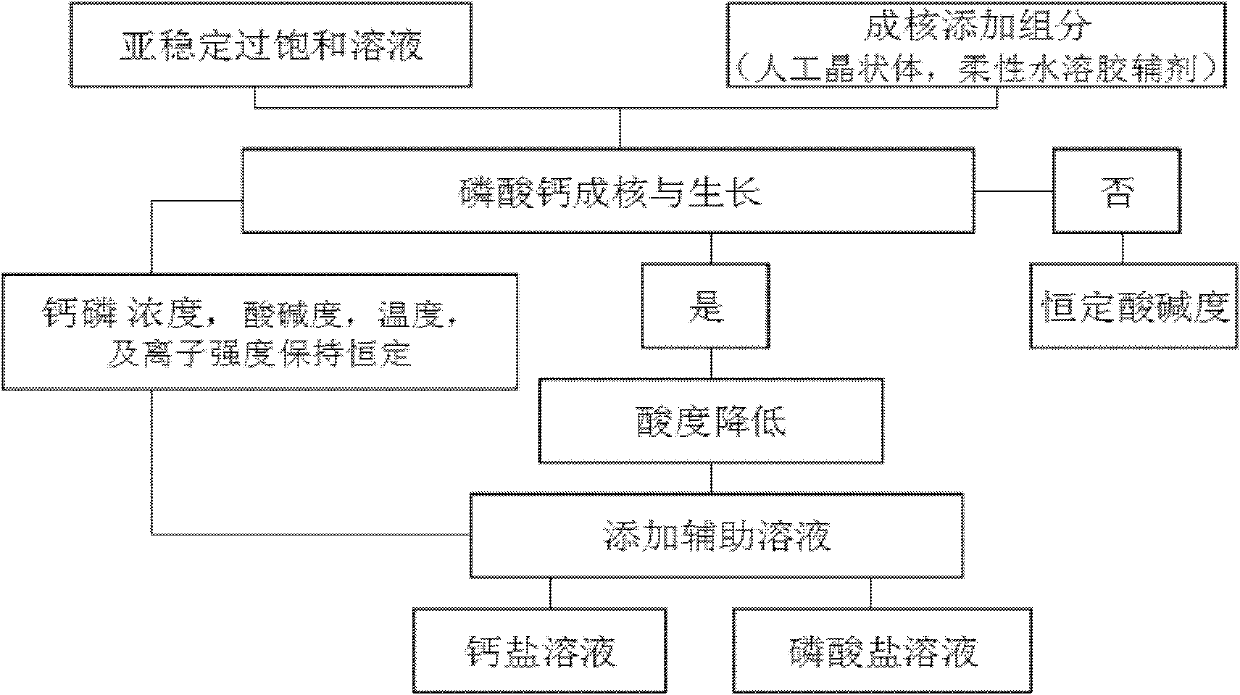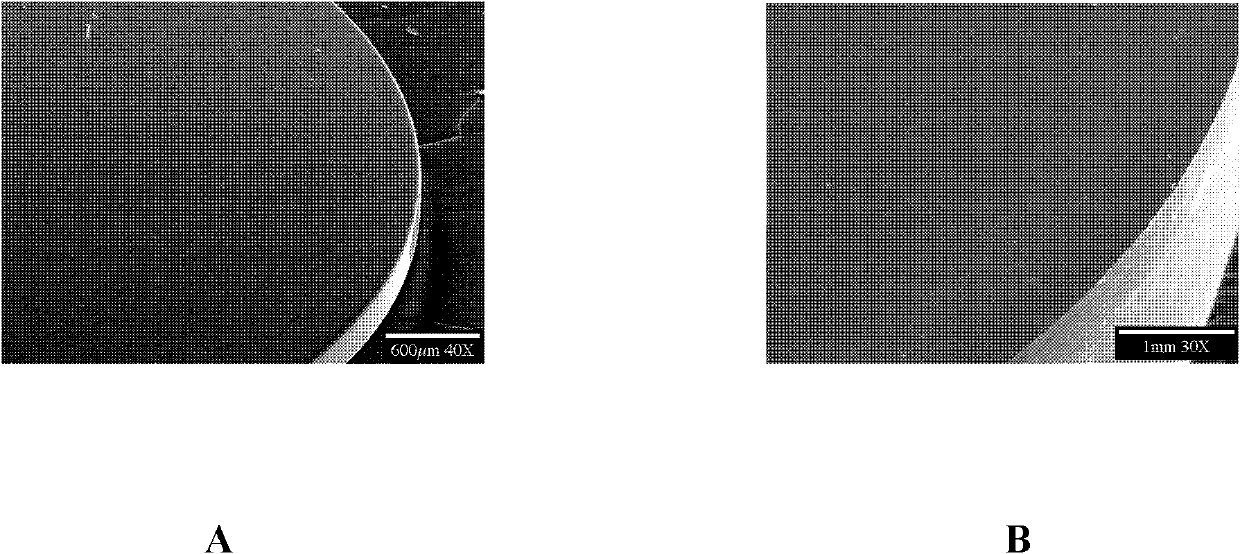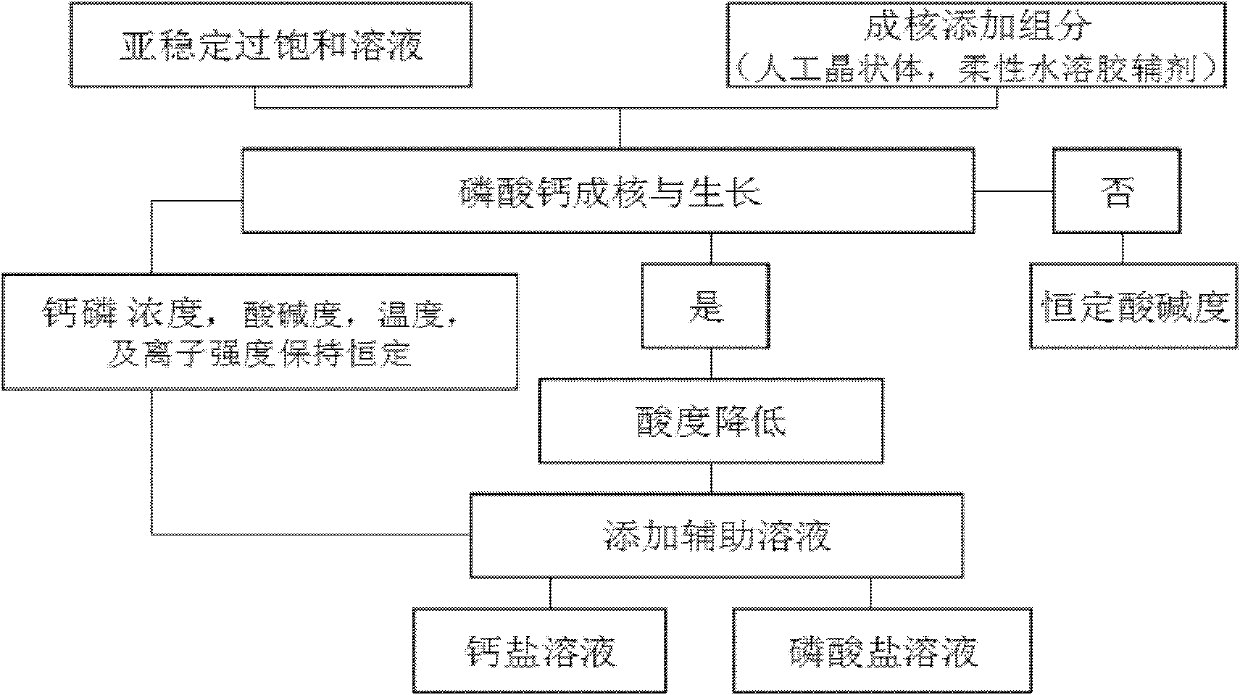Artificial lens implantation flexible hydrosol auxiliary agent and preparation method thereof
A technology of intraocular lens and hydrosol, which is applied in the field of medical materials, can solve problems such as increasing surface electron density, decreasing product stability, lens turbidity, etc., achieves excellent fluidity, reduces body rejection, and prolongs service life.
- Summary
- Abstract
- Description
- Claims
- Application Information
AI Technical Summary
Problems solved by technology
Method used
Image
Examples
Embodiment 1
[0021] Example 1 Preparation of flexible hydrosol auxiliary agent of the present invention
[0022] Dissolve 9 grams of sodium chloride in 1 liter of sterile distilled water to obtain buffered saline.
[0023] Under sterile conditions, mix 15 grams of disodium hydrogen citrate, 10 grams of monosodium hydrogen citrate, 25 grams of carboxypropyl methylcellulose, 15 grams of sodium chondroitin sulfate, 30 grams of potassium chloride, 30 grams of magnesium chloride, Dissolve 10 grams of sodium acetate in 600 ml of buffered saline, and stir evenly at a speed of 25 times per minute; then adjust the pH to 7.1 with hydrochloric acid or sodium hydroxide solution, and add sterile distilled water to adjust to 1 liter.
[0024] Appearance of this product: completely transparent.
Embodiment 2
[0028] Example 2 Preparation of flexible hydrosol auxiliary agent of the present invention
[0029] Dissolve 9 grams of sodium chloride in 1 liter of sterile distilled water to obtain buffered saline.
[0030] Under sterile conditions, mix 6 grams of disodium hydrogen citrate, 4.5 grams of monosodium hydrogen citrate, 30 grams of carboxypropyl methylcellulose, 20 grams of sodium chondroitin sulfate, 12 grams of potassium chloride, 25 grams of magnesium chloride , 15 grams of sodium acetate, dissolved in 600 milliliters of buffered saline, stirred evenly at a speed of 25 times per minute, then adjusted the pH to 7.1 with hydrochloric acid or sodium hydroxide solution, and added sterile distilled water to 1 liter.
[0031] Appearance of this product: completely transparent.
Embodiment 3
[0034] Example 3 Preparation of flexible hydrosol auxiliary agent of the present invention
[0035] Dissolve 9 grams of sodium chloride in 1 liter of sterile distilled water to obtain buffered saline.
[0036] Under sterile conditions, dissolve 50 grams of carboxypropyl methylcellulose, 25 grams of sodium chondroitin sulfate, 30 grams of potassium chloride, 32 grams of magnesium chloride, and 20 grams of sodium acetate in 600 milliliters of buffered saline, to 25 Stir evenly at a speed of times per minute, then adjust the pH to 7.1 with hydrochloric acid or sodium hydroxide solution, add sterile distilled water to 1 liter, and obtain.
[0037] Appearance of this product: completely transparent.
PUM
 Login to View More
Login to View More Abstract
Description
Claims
Application Information
 Login to View More
Login to View More - R&D
- Intellectual Property
- Life Sciences
- Materials
- Tech Scout
- Unparalleled Data Quality
- Higher Quality Content
- 60% Fewer Hallucinations
Browse by: Latest US Patents, China's latest patents, Technical Efficacy Thesaurus, Application Domain, Technology Topic, Popular Technical Reports.
© 2025 PatSnap. All rights reserved.Legal|Privacy policy|Modern Slavery Act Transparency Statement|Sitemap|About US| Contact US: help@patsnap.com



